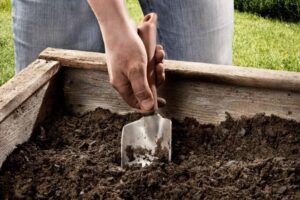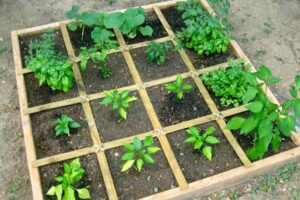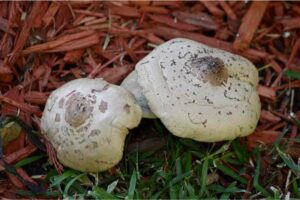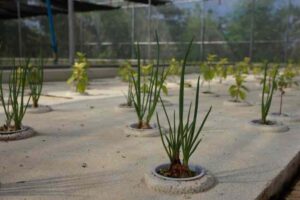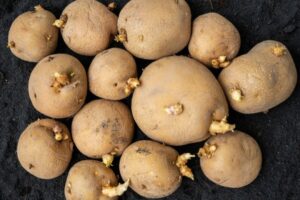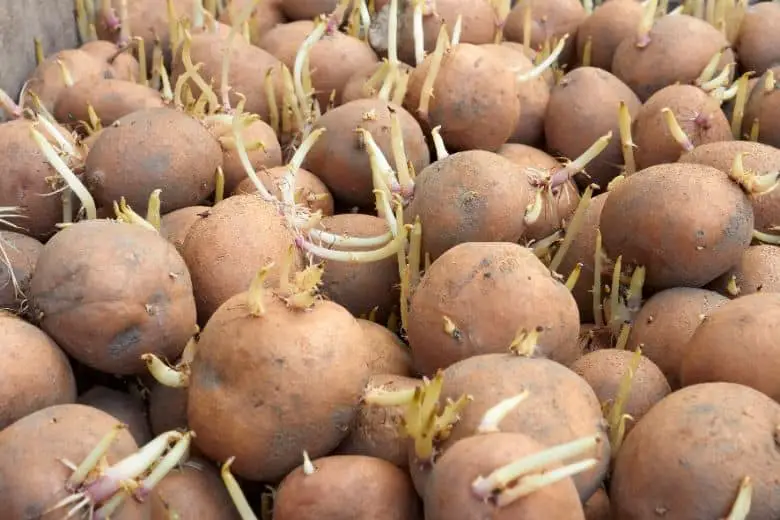
Seed potatoes need to be stored properly from harvest until you’re ready to plant them in the spring. Improper storage can cause the potatoes to sprout prematurely, rot, or lose vigor.
Let’s explore different techniques for storing seed potatoes over winter and the pros and cons of each method.
Technique 1: Temperature Control:
Ideally, seed potatoes should be stored at temperatures between 45-50°F for maximum length of storage. Higher temperatures above 50°F can cause potatoes to sprout prematurely or rot. Lower temperatures near freezing can also lead to sprouting, rot, or damage to the potatoes.
Some ways to maintain ideal temperatures include:
Technique 2: Ventilated Storage Bin:
Building or buying a ventilated storage bin allows air circulation to keep potatoes from rotting while trapping cool air below 50°F. Wood or plastic bins with slats for ventilation are sufficient.
Pros:
- Controllable temperatures within the ideal range
- Easy access for checking on potatoes
- Ventilation prevents rot
Cons:
- Requires building or buying a bin
- Needs regulated indoor space for temperature control
Technique 3: Cool Cellar:
Naturally cool cellars maintain below 50°F without added temperature regulation needed. Dark corners of unfinished basements often stay cool enough.
Pros:
- Free storage solution
- Temperature regulates itself within the ideal range
- Out-of-the-way storage
Cons:
- Limited indoor space in homes with cellars
- Temperatures higher than insulated bin in spring/fall seasons
Technique 4: Refrigerator:
A refrigerator crisper drawer can store a smaller amount of seed potatoes at ideal temperatures below 50°F consistently.
Pros:
- Guaranteed ideal temperatures year-round
- Convenient indoor access
Cons
- Limited space for large amounts of seed potatoes
- Uses electricity compared to outdoor/cellar storage
Technique 5: Light Exposure:
When potatoes are exposed to light, it triggers them to sprout. So, the first tip is to store potatoes in a cool, dark place away from direct sunlight. Sunlight exposure can encourage sprouting before you’re ready to plant.
Some good options that provide darkness include the basement or cellar, closet, under the bed, and garage.
Technique 6: Potato Storage Containers:
In addition to maintaining the right temperature and light exposure, it’s important to choose breathable containers for your potatoes. This allows moisture and excess gases to escape while still keeping the potatoes protected. Some common container options include:
Technique 7: Mesh Bags:
Cotton or polyester mesh gardening bags allow maximum airflow while containing potatoes. Stack bags in your storage area.
Pros:
- Highly breathable, Inexpensive
Cons:
- Less protection than rigid containers
- Potential for critter or insect damage to bags
Technique 8: Ventilated Bins:
Plastic or wooden bins with slatted sides, tops, and bottoms provide ventilation and structure.
Pros:
Durable containment, Control temperatures inside bins, Stackable
Cons:
Require building or purchasing bins, Less breathable than mesh bags
Technique 9: Wood Crates:
Slatted wooden boxes or crates allow air movement in and out.
Pros:
- Long-lasting storage option, Stackable boxes save space
Cons:
- Require building crates from wood
- Less breathable than mesh or punched cardboard
Technique 9: Breathable Paper Bags:
Kraft paper or punched cardboard boxes are affordable breathable options.
Pros:
- Inexpensive and disposable, Breathable sides
Cons:
- Less durable than rigid containers
- Vulnerable to tearing or critter damage
Proof Method 1:
Expert Gary Gao from Cornell University advises using slatted plastic or wooden bins for potato storage. He found these containers allow optimal airflow while still protecting potatoes from pests, moisture fluctuations, and physical damage compared to paper or mesh bags alone. Stacked bins also maximize storage space.
Controlling Moisture
High moisture levels can hasten potato sprouting and cause rotting during storage. While potatoes need some moisture, it’s important to reduce excess dampness using these techniques:
- Allow potatoes to dry for 2 weeks after harvest before putting them in storage. Leave in a shaded area to cure.
- Store potatoes in a breathable room or container at the right temperature to allow moisture to naturally escape. Ventilated bins, crates, or mesh bags help.
- Check potatoes periodically during storage. Discard any showing signs of rotting. Remove excess dampness from the storage area if present.
- Avoid spraying water or moistening the storage area, which adds humidity and leads to decay.
Proof Method 2:
According to potato expert John Navazio from Organic Seed Alliance, curing potatoes for 2 weeks after harvest reduces surface moisture by 80% or more, significantly extending storage time. This quick drying helps potatoes last with proper breathing containers over winter without additional moisture control needed.
Rotating Stock
When storing potatoes long-term, it’s a good idea to rotate which potatoes you use first. This helps prevent potatoes from germinating or rotting in the same area of storage over multiple months. Some effective rotation techniques include:
- Track the oldest potatoes and use them first for cooking or planting each month. This prevents over-storage in one spot.
- Periodically move stacks or containers around the storage space to distribute any buildup of gases, heat, or moisture throughout.
- Pull potatoes from multiple areas each time rather than emptying just one spot first.
Proof Method 3:
According to Michigan State University Extension, rotating stored potato inventory as you use or plant them mixes up the microclimate and redistributes any moisture or gases that accumulate. This slows rot or germination in any one area, using up seed potatoes in the order stored for maximum longevity.
Conclusion
In summary, to store seed potatoes for extended periods until planting time, focus on maintaining cool temperatures between 45-50°F, protecting from light exposure, using breathable containers, controlling excess moisture, and rotating your stored potatoes at intervals. Following these guidelines will keep your seed potatoes in tip-top shape for a healthy spring crop. Let me know if you have any other potato storage questions!

